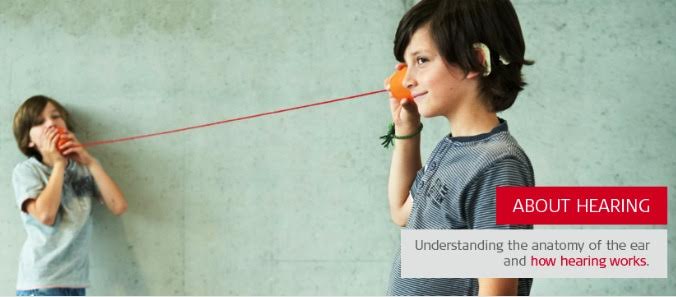Each part of the ear plays an important role in supplying the brain with sound information. Hearing loss is the result of damage to one or multiple parts of the outer, middle or inner ear. To best understand hearing loss, it may be helpful to understand the anatomy of the ear and how hearing works. The following posts will give you a general outline.
Hearing loss should always be diagnosed by a professional, such as an audiologist or an ENT specialist. The professional will test hearing in order to determine the type and severity. An audiogram, which illustrates the findings, is then prepared.
There are four types of hearing loss:
The first and most common type is sensorineural hearing loss, which results from missing or damaged sensory cells (hair cells) in the cochlea.
Conductive hearing loss describes any problem in the outer or middle ear that prevents sound from being conducted properly to the inner ear.
Mixed hearing loss is a combined loss of both sensorineural and conductive hearing.
Finally, neural hearing loss occurs when the auditory nerve cannot send signals to the brain.
Over the next several days, A Atlantic Hearing Aid Center will go into detail, explaining each of these four hearing loss types, in a series we will refer to as “The basics of hearing and hearing loss”.

 9 Dec , 2015
PHOTO CREDIT:MED-ELEach part of the ear plays an important role in supplying the brain with sound information. Hearing loss is the result of damage to one or multiple parts of the outer, middle or inner ear. To best understand hearing loss, it may be helpful to understand the anatomy of the ear and how hearing works. The following posts will give you a general outline.Hearing loss should always be diagnosed by a professional, such as an audiologist or an ENT specialist. The professional will test hearing in order to determine the type and severity. An audiogram, which illustrates the findings, is then prepared.There are four types of hearing loss:The first and most common type is sensorineural hearing loss, which results from missing or damaged sensory cells (hair cells) in the cochlea.Conductive hearing loss describes any problem in the outer or middle ear that prevents sound from being conducted properly to the inner ear.Mixed hearing loss is a combined loss of both sensorineural and conductive hearing.Finally, neural hearing loss occurs when the auditory nerve cannot send signals to the brain.Over the next several days, A Atlantic Hearing Aid Center will go into detail, explaining each of these four hearing loss types, in a series we will refer to as “The basics of hearing and hearing loss”.MULTIPLE SOURCES:WikipediaMED-ELHearing viewScience daily
9 Dec , 2015
PHOTO CREDIT:MED-ELEach part of the ear plays an important role in supplying the brain with sound information. Hearing loss is the result of damage to one or multiple parts of the outer, middle or inner ear. To best understand hearing loss, it may be helpful to understand the anatomy of the ear and how hearing works. The following posts will give you a general outline.Hearing loss should always be diagnosed by a professional, such as an audiologist or an ENT specialist. The professional will test hearing in order to determine the type and severity. An audiogram, which illustrates the findings, is then prepared.There are four types of hearing loss:The first and most common type is sensorineural hearing loss, which results from missing or damaged sensory cells (hair cells) in the cochlea.Conductive hearing loss describes any problem in the outer or middle ear that prevents sound from being conducted properly to the inner ear.Mixed hearing loss is a combined loss of both sensorineural and conductive hearing.Finally, neural hearing loss occurs when the auditory nerve cannot send signals to the brain.Over the next several days, A Atlantic Hearing Aid Center will go into detail, explaining each of these four hearing loss types, in a series we will refer to as “The basics of hearing and hearing loss”.MULTIPLE SOURCES:WikipediaMED-ELHearing viewScience daily




























































































































































































































































































































































































































































































































































































